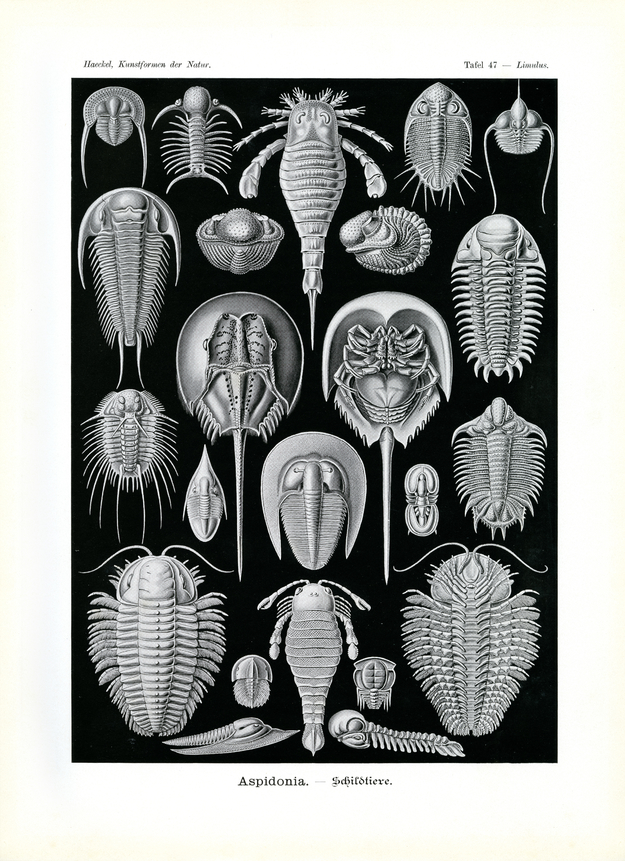Translation of the original German introduction by Ernst Haeckel:
Phylum of Articulata (Gliedertiere); - class of Crustacea (Krustentiere); - subclass of Aspindonia (Schildtiere).
Aspindonia form a very old group of Articulata, today represented in only one living genus, the peculiar Limulus (Schwertschwanz – ‘sword tail’ or Pfeilkrebs – ‘arrow crab’, fig. 1-3). However, Aspindonia played a very important role during the Paleozoic Age, ancient times of at least 14 – 20 million years ago, due to its representation in numerous and impressive species. At that time, especially during the Silurian and Devonian Age, Aspindonia inhabited the ocean to such an extent that they appear to be the dominant representatives of Articulata, especially the speciose Trilobitae. Other Aspindonia, the huge (1,5 m long) Pterygotae in particular, are the biggest and strongest of all Articulata.
Within the system of Articulata the Aspidonia are usually counted to the subclass of Caridoniae, thus to the Crustacea in a narrower sense. However, they are distinguished from the latter by the absence of their typical Nauplius-larva. Furthermore, all Aspidonia carry only one pair of genuine antennae or ‘sense-horns’ in front, anterior to the mouth, all Caridoniae, however, carry tow pairs.
Further, Aspidonia resemble scorpions in certain respects, so that some zoologists link them to the Archnidae. Both classes of Crustacea originate from the older Annelidae (Ringeltiere) that carried two pairs of legs at each segment. Some Trilobitae strongly resemble certain Annelidae, for example Triarthrusa (fig. 20a and b).
Translation by VR Translators Bangalore
We've scanned the original lithography at 1200dpi on the Epson A3 scanner of A3 scanner huren. You can download a 400dpi JPEG here.
